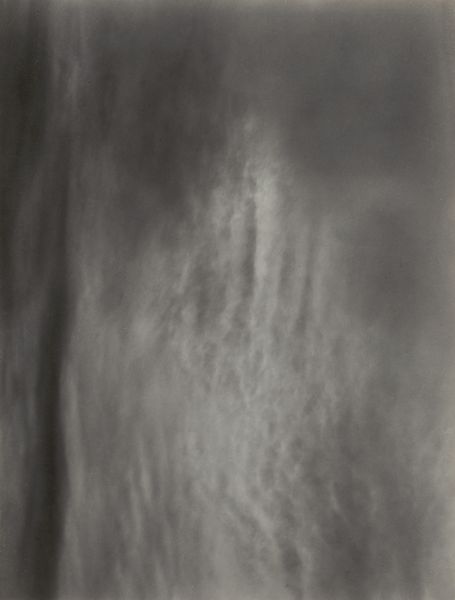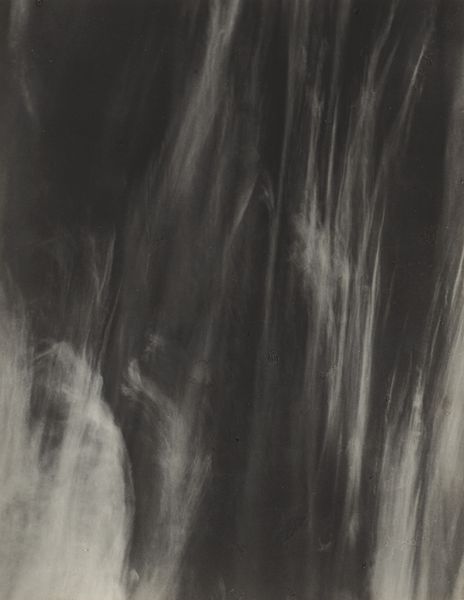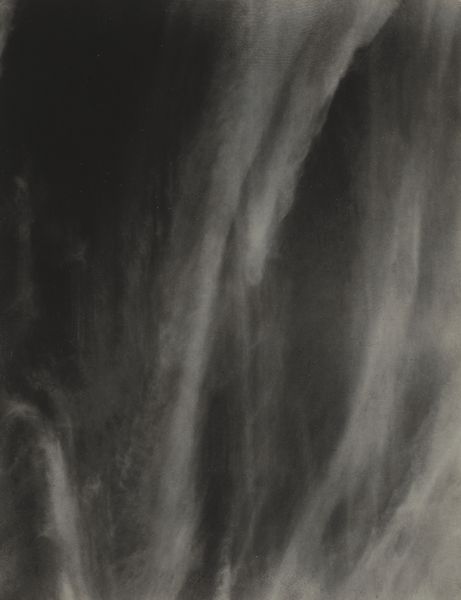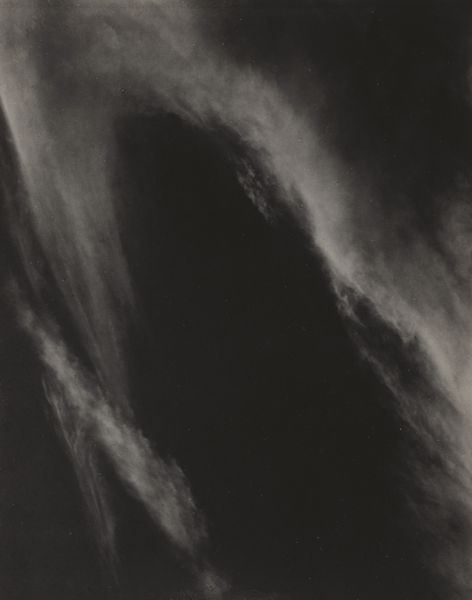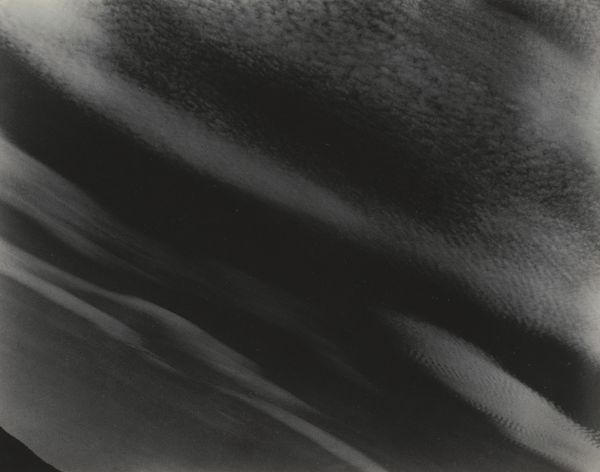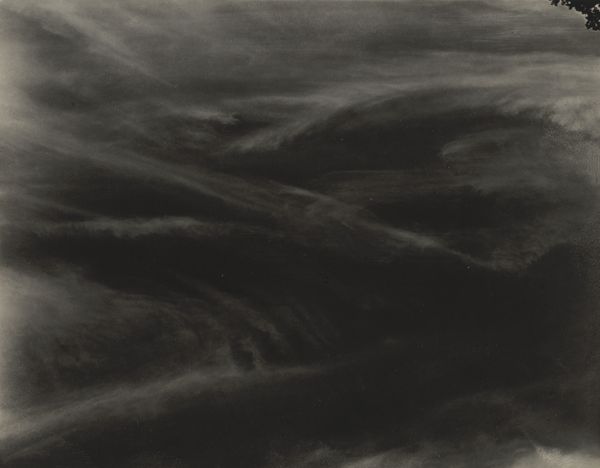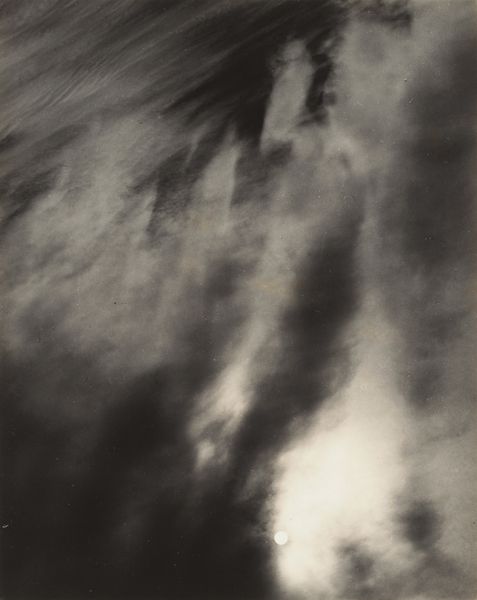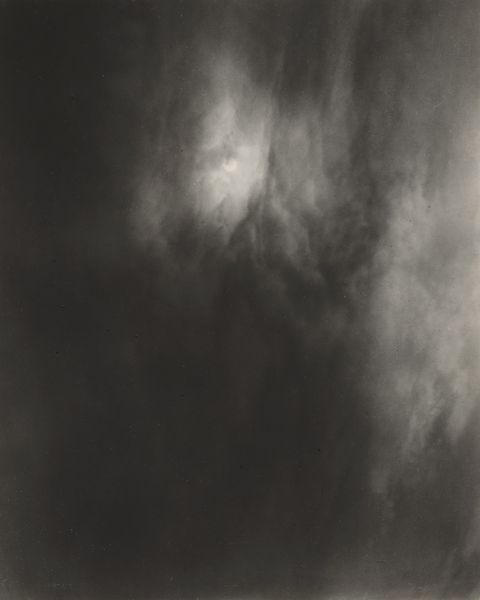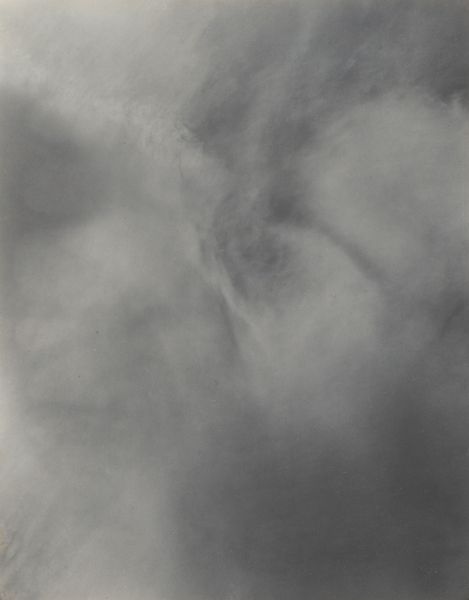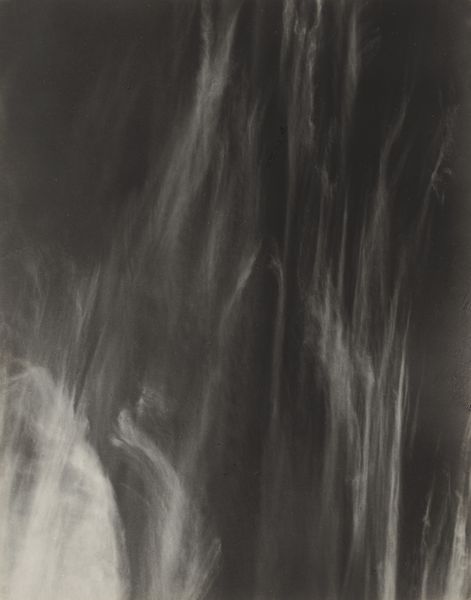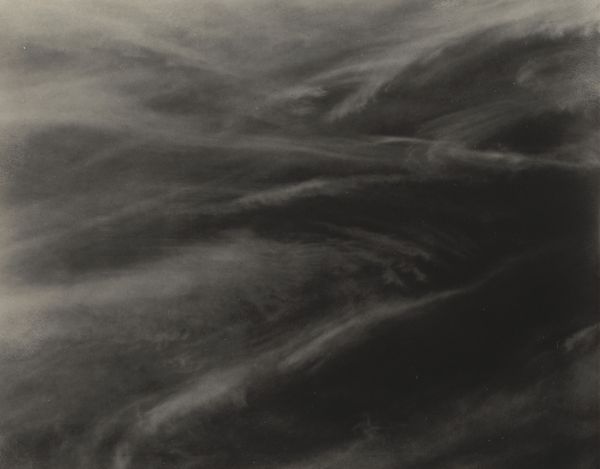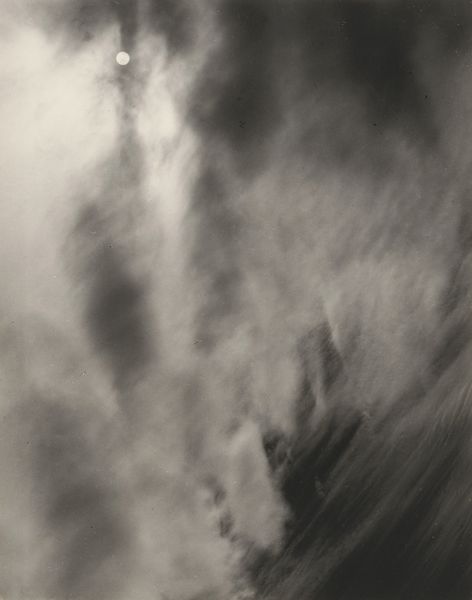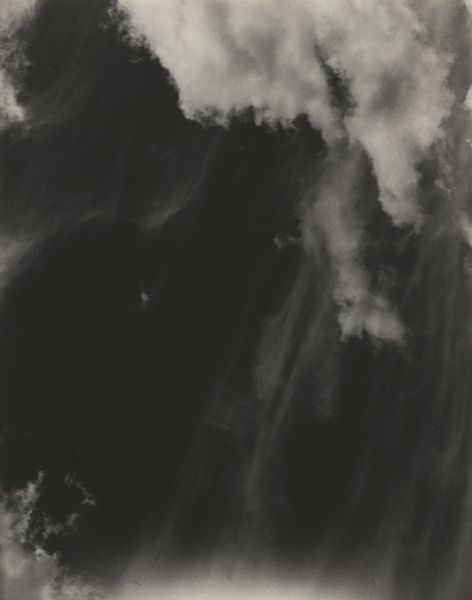
Dimensions: sheet (trimmed to image): 11.5 x 8.9 cm (4 1/2 x 3 1/2 in.) mount: 34.2 x 27 cm (13 7/16 x 10 5/8 in.)
Copyright: National Gallery of Art: CC0 1.0
Editor: So, here we have Alfred Stieglitz's "Equivalents" from 1927, a gelatin silver print. It strikes me as intensely moody – almost melancholic – despite being simply a study of clouds. What's your take? What do you see in this piece? Curator: Ah, Stieglitz’s clouds... They whisper secrets, don’t they? I see pure emotion. You see, Stieglitz wasn’t just photographing clouds, he was capturing *feelings*. He called them "equivalents" because he believed he could find visual forms in the natural world that corresponded to his inner states. Close your eyes for a second and imagine those clouds being turbulent thoughts, fleeting joys, or maybe even the subtle textures of a dream. Does it resonate more now? Editor: Definitely. Knowing that context shifts my perception entirely. It makes the abstraction less arbitrary. He's not aiming to replicate clouds exactly as they are, but rather to express inner weather. Curator: Precisely! Think of it as emotional weather mapping. And, it's beautifully modernist, isn’t it? Turning away from representational subject matter to explore purely formal and emotional territories. Now, isn’t that an evocative way to consider abstraction? Editor: It is. I initially saw it as just an interesting composition in monochrome, but now it's far more complex and engaging. It makes me wonder what kind of weather *I'm* projecting when I look at art! Curator: Isn't that the magic, though? That an artwork can hold a mirror to our own internal landscape. Thanks for that, It's given me something new to ponder.
Comments
No comments
Be the first to comment and join the conversation on the ultimate creative platform.
